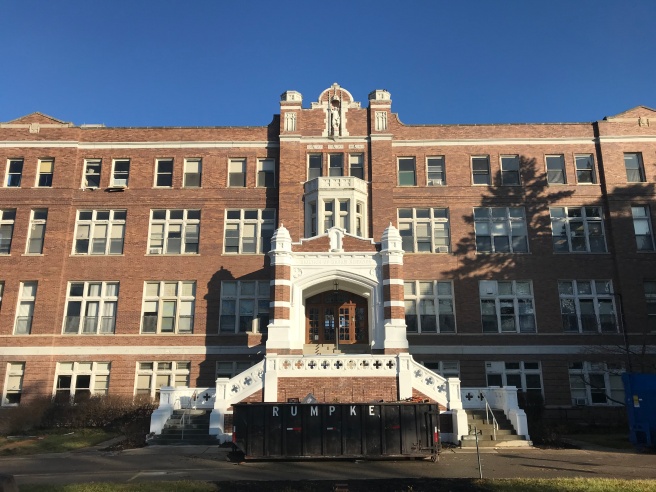A memorial to Hannaford and other Cincinnati architects would help Cincinnatians remember our unique history as buildings on the American landscape homogenize around us.
On the corner of Epworth and Urwiler Avenues in the heart of Westwood stands Westwood United Methodist Church. The historic church was built in 1896. It was designed by a man who is remembered as Cincinnati’s most famous architect, Samuel Hannaford.

Some 40 years before the completion of the Westwood church, a young Hannaford at the start of his career perhaps could have been observed walking past this site, traveling on weekends from his downtown boarding room to the home of his wife’s family in the Cheviot area (present day Westwood.) Hannaford had arrived in the United States with his parents and seven siblings as a nine year old immigrant from England; his father purchased a farm soon after arriving. This 1847 Hamilton County map shows the Hannaford home along Harrison Avenue in what is now Westwood. Samuel started apprenticing as an architect in 1854 and in 1857 married Phoebe Stathem, who was from a family of early Cheviot pioneers. Present day Stathem Avenue in Westwood is a block from Westwood United Methodist church.
As an architect, Hannaford had stints where he formed partnerships with architects Edwin Anderson and Edwin Proctor, as well practicing solo, before founding the firm of Hannaford and Sons, which survived him for many years posthumously after his death in 1911. Over the course of his career, he designed City Hall and Music Hall, as well as other churches, schools, lodges, and residences throughout the Cincinnati area, too numerous to list here. You can read more about the life of Samuel Hannaford at Betty Ann Smiddy’s excellent website here (which was used as a primary reference source for this post) and see a list of works on the same website here.
Besides the Westwood United Methodist Church, Hannaford and the firm of Hannaford and Sons had their hand in many buildings in Westwood. The Cheviot Masonic Lodge at the corner of Harrison & Montclair was completed in 1910. The beautiful Mother of Mercy High School on Werk Road was completed in 1922. Westwood First Presbyterian Church, a landmark on Harrison Avenue, was completed in 1926.



This year, 2019, the grounds of Westwood Town Hall are being renovated. Gaines Triangle, a small strip on land between Harrison and Epworth across from Westwood United Methodist Church, is part of the project. I submit that this would be a good location for a Samuel Hannaford memorial of some kind, one that would engage the passing pedestrian walking through Westwood’s neighborhood business district.

A memorial here could take many forms, depending on community input and support. Perhaps there could be a statue of a seated Hannaford working at a desk, facing the church he designed. Perhaps human-sized sculptures of architectural trade tools from Hannaford’s period could be constructed, that people could climb on and pose with for social media posts. Perhaps there could an interactive electronic kiosk of some kind. Perhaps a bust or an Ohio Historical Marker would be appropriate.
Gaines Triangle also sits across the street from the landmark Cincinnati and Suburban Bell Telephone Building that has recently been rehabbed into a new home for Madcap Productions Puppet Theatre. This gorgeous building is not a Hannaford, but was designed by another very prominent Cincinnati architect, Harry Hake. Hake designed many police and fire stations across Cincinnati, including the Junietta Firehouse (built 1907) in Westwood, just across Harrison Avenue from the telephone exchange building. He also designed the Art Deco-style Cincinnati Bell building on Seventh Street, as well as other buildings downtown, and founded a long lasting architectural firm. Perhaps the concept of a Hannaford memorial could be expanded to tell the story of Hake or other Cincinnati architects.


Why is it important, for us as Cincinnatians, to care about these old buildings and the people that built them? The Cincinnati of the past, that built these buildings, used to be a big and important city, with much more national cultural relevance than it has today. But decisions we have made in the modern era- bulldozing the dense neighborhoods of the West End for highways, tearing down our architectural heritage for parking lots- have mutilated our urban form and have exacerbated, if not caused, our relative decline. When developers today try to build “work-live-play environments” to “attract millennial talent”, what they are trying to do is (often clumsily) build an imitation of the traditional city. Fortunately for us, Cincinnati still has intact portions of the real thing. This is our “brand”, our competitive advantage, and the key to our future success.
